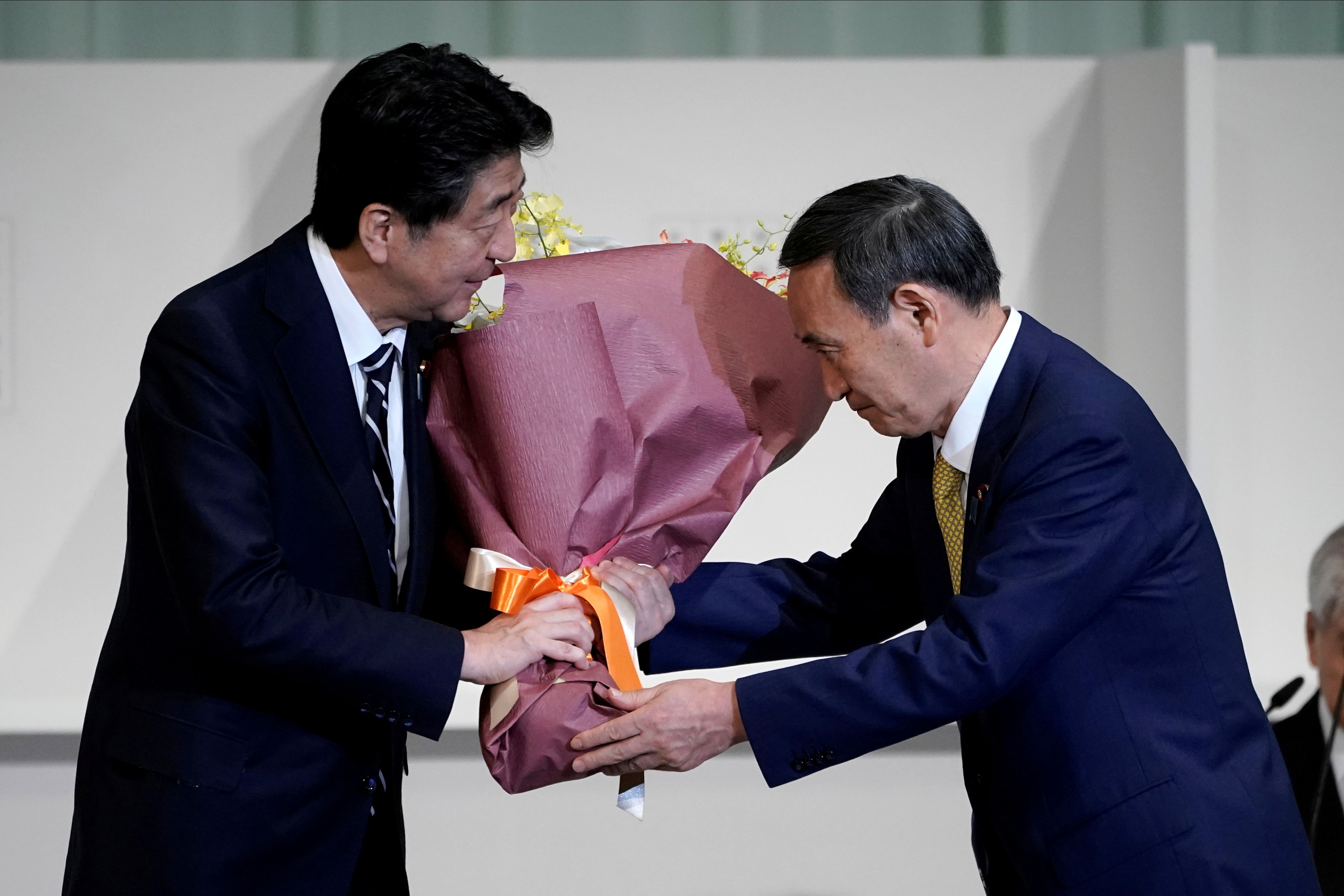Japan’s Foreign Policy After Abe

On 28 August, Prime Minister Abe Shinzo resigned from office, citing health problems. He was the longest-serving prime minister in Japanese history (seven years and eight months). His resignation occurred as the country’s economy deteriorated because of the COVID-19 pandemic. Despite a record economic stimulus package, in the second quarter of this year Japan’s GDP fell by 28.1%, year on year, suffering its worst post-war contraction. Criticism of the government’s response to the pandemic contributed to the record low support for the Abe cabinet, which in August was 34%.
On 16 September, Suga, the long-time chief cabinet secretary under Abe, became the new prime minister. Two days earlier, he was elected president of the ruling Liberal Democratic Party (LDP). He will hold both positions until October next year when LDP elections will be held again, before the parliamentary elections. Given the close cooperation between Suga and Abe, the new prime minister will use his predecessor’s foreign policy achievements.
Abe’s Achievements
Abe successfully introduced institutional changes improving the decision-making process in foreign and security policy. Established in 2013, the National Security Council is responsible for setting assumptions and directions in this area. In the same year, Japan adopted its first ever National Security Strategy (NSS). Although Abe ultimately failed to achieve his overarching goal of revising the pacifist constitution, his efforts to support “active pacifism” led to reinterpretation of the constitution’s Article 9. In effect, Japan adopted legislation to allow the country to export arms and participate in collective self-defence operations.
Abe-led Japan intensified its policy in the Indo-Pacific region, understood as the area from East Asia through South Asia to the Middle East and Africa. In line with the vision of a Free and Open Indo-Pacific (FOIP) announced in 2016, Japan intends to shape the situation in the region on three levels. In the normative dimension, it cooperates politically with countries that share the principles of a liberal international order based on the rule of law, freedom of navigation, and free trade. In the economic dimension, it emphasises the strengthening of connectivity, concluding trade and investment agreements, and high-quality infrastructure investments. Contrary to the objectionable Chinese Belt and Road Initiative, Japan has contributed around $200 billion to connectivity projects in the FOIP area in a transparent way and taking into account local needs, employee rights, and environmental standards. Japan’s efforts to institutionalise free trade in the Pacific were expressed through the adoption of the Comprehensive and Progressive Agreement for Trans-Pacific Partnership after the Trump administration withdrew from the Trans-Pacific Partnership. In the security dimension, Japan is developing its own capabilities and defence cooperation to ensure maritime security. This is reflected in the return to the 2007-initiated Quad (cooperation between Japan, the U.S., Australia, and India) and the establishment of defence cooperation with ASEAN countries.
During Abe’s rule, Japan deepened allied ties with the U.S. and cooperation with the EU. Abe maintained the best possible personal relationship with Trump, which helped Japan to develop security cooperation and maintain relatively favourable trade relations. Japan’s policy in the region has been recognised by the U.S., which, based on the Japanese FOIP concept, formulated its own strategy towards the Indo-Pacific in 2017–2019. In relations with the EU, Japan has concluded economic and strategic partnership agreements and launched a partnership on connectivity.
Challenges Facing Suga
The challenge for Japan remains the pursuit of balance amid the U.S.-China rivalry. Despite its alliance with the U.S., Japan does not support the Trump administration’s confrontational stance towards China. This is because of economic ties to China, Japan’s largest trading partner and the largest destination for Japanese investment. Japan’s policy after 2018, when Abe met Chinese leader Xi Jinping in Beijing, shows the will to ease bilateral tensions and openness to conditional cooperation with China on infrastructure projects in third countries. Regardless of this, Chinese military manoeuvres in the East China Sea around the Senkaku/Diaoyu Islands (controlled by Japan, to which China claims rights), as well as around Taiwan and the South China Sea, which threaten Japanese energy and economic security, remain a constant problem for Japan.
In relations with the U.S., disputes during the negotiations over the costs of stationing American forces may also be problematic. Because of the Japanese decision to halt the deployment of land-based Aegis Ashore systems, the allies will have to develop guidelines for the development of Japanese anti-missile defence, which is important in connection with the growing missile capabilities not only of China but also Russia and North Korea.
Japan will also face the challenge of deepening economic cooperation in the Indo-Pacific region. By the end of the year, negotiations on the Regional Comprehensive Economic Partnership (RCEP), covering 15 countries of the region (ASEAN, Japan, South Korea, China, Australia, New Zealand) are to be completed. As most Japanese investors do not intend to withdraw production from China, the government’s plans to diversify the supply chain and move production facilities to Japan and South and Southeast Asia so far apply to medical goods.
Disputes with Russia over the Northern Territories/Kuril Islands and with South Korea over Takeshima/Dokdo also remain a challenge. In the case of Russia, the intensification of contacts at the highest level and the deepening of economic relations have turned out to be insufficient to resolve the disputes. In the case of South Korea, the territorial dispute overlaps with the escalating tensions after 2019 over historical disputes and trade issues. In relations with North Korea, the issue of Japanese citizens kidnapped by North Korea in the 1970s remains an unresolved and important domestic policy problem.
Conclusions
Abe’s legacy will shape Japan’s foreign and security policy in the next years. The FOIP vision announced by Abe is a conceptually coherent response to China’s policy in the region.
The need to focus on domestic problems and the temporary nature of Suga’s rule prevent him from introducing significant changes in foreign policy. Due to the lack of experience in this field, he will primarily rely on experienced members of the cabinet, including Motegi Toshimitsu, who remained the minister of foreign affairs.
Suga announced that he would focus on strengthening the alliance with the U.S. and on multilateral cooperation in the security and economic dimension with democracies in the Indo-Pacific region. A revision of the NSS is also planned to respond to missile threats from North Korea, Chinese activity in the seas, and economic security problems caused by the pandemic. In economic interests, Japan will strive for stable relations with China, which could be served by a visit of Xi Jinping to Japan, initially planned for April this year. As a former minister in charge of the abduction issue, Suga may try to persuade North Korea to release Japanese citizens. The new prime minister may also initiate an improvement in relations with South Korea, whose authorities and public criticised Abe.
Japan will continue to cooperate with the EU based on the agreements of recent years. The will to deepen cooperation with Japan is confirmed by strategic documents for the Indo-Pacific adopted by France (May 2019) and Germany (September 2020). The success of Japanese-European undertakings will require greater political and practical cooperation within the framework of the NATO-Japan partnership and increased contributions from both sides to the EU guarantee fund to mobilise private capital to finance infrastructure projects between Europe and Asia. In relations with Poland, Japan will develop cooperation, strengthened during the meeting of prime ministers Abe and Mateusz Morawiecki in Tokyo in January, especially in the field of investment, as Japan is the second-largest Asian investor in Poland behind South Korea.


